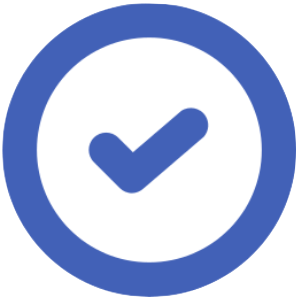 YOUTUBE VIDEO:
https://www.youtube.com/watch?v=q5MCw8446gs
YOUTUBE VIDEO:
https://www.youtube.com/watch?v=q5MCw8446gs
 Anxiety ESL Lesson Plan Description
Anxiety ESL Lesson Plan Description
OBJECTIVE & OVERVIEW
This anxiety ESL lesson plan provides activities, PDF worksheets, and digital materials designed for advanced C1 students. In this lesson, students will:
- Explore anxiety and other mental health issues
- Learn some vocabulary related to anxiety & mental health
- Watch a video about mental health awareness on social media
- Study and use grammar on cleft sentences
- Use cleft sentences in a variety of real-world scenarios focusing on mental health
PREVIEW & DISCUSSION
In the first part of this anxiety ESL lesson plan, students explore several topics surrounding anxiety, including symptoms, causes/triggers, impacts on daily life, and treatments & coping mechanisms.
Then, students proceed to discuss a few questions and topics centered on mental health issues and social media.
VIEWING ACTIVITY
In the second stage of this lesson, students watch a video about the impact of mental health awareness on teens and young adults these days. In the video, a psychologist explains some of her research she’s done on this topic. She makes the point that increased mental health awareness on social media is ironically and unintentionally making people misidentify normal daily struggles as more severe mental health issues.
In the first listening activity, there are a few questions for students to answer about high-functioning anxiety and mental health awareness.
The next activity focuses on the three stages Lucy discusses in the cycle of mental health issues. This is followed by an activity for students to either take notes or discuss what happens in each of these three stages.
DISCUSSION & GRAMMAR
After students watch the video, there are two discussion questions that prompt students to reflect on the information in the video and mental health.
The next part of the lesson is focused on grammar using cleft sentences. Students read two quotes (quote A & quote B). Quote B contains a cleft sentence. A cleft sentence is used to emphasize a specific part of the sentence, typically the subject or verb phrase. Students answer a few questions about cleft sentences based on the example quote.
In the third part, there are some sentences for students to rewrite using cleft sentences.
ROLE PLAY (OPTION 1)
This activity focuses on using cleft sentences to discuss and understand various mental health issues. Students begin by choosing two mental health challenges, such as high-functioning anxiety or perfectionism, and discuss their impacts and potential solutions. They use cleft sentences to highlight how these issues affect daily life and propose effective strategies.
In this role-play scenario, students take turns sharing their selected mental health issue (Student A) and discussing it with a peer (Student B). They emphasize the issue's impact using cleft sentences, while Student B listens actively, asks clarifying questions, and suggests solutions framed in cleft sentences. This activity promotes effective communication, empathy, and practical problem-solving skills in addressing mental health challenges.
MENTAL HEALTH DISCUSSIONS (OPTION 2)
This activity encourages thoughtful discussion on mental health topics using cleft sentences for clarity and emphasis. Students choose discussion topics like the challenges of discussing mental health openly, support from friends and family, impacts of social support, effective mental health education in schools, and personal experiences with mental health issues.
Students take turns asking each other these questions, sharing their opinions, and attempting to answer using cleft sentences beginning with "What...". This approach helps articulate complex ideas succinctly and highlights key points in each discussion topic.
ONLINE COMMENTING (OPTION 3)
In this activity, students analyze comments for cleft sentences and craft responses using similar structures. They engage with comments critiquing TikTok's mental health content monetization, youth perceptions of mental health, and professional communication in psychology.
Students identify cleft sentences in the comments and choose one or two to respond to, integrating cleft sentences in their replies for emphasis. They then compare responses with peers or the teacher.
BENEFITS OF USING THIS ANXIETY ESL LESSON:
Comprehensive Learning:
Learn about anxiety and mental health, covering symptoms, causes, impacts, and coping methods to deepen understanding.
Practical Vocabulary:
Expand vocabulary related to anxiety and mental health through discussions and activities, improving language skills in this area.
Critical Thinking:
Discuss the impact of mental health awareness on social media, encouraging critical thinking and the formation of well-rounded opinions.
Advanced Grammar:
Practice using cleft sentences to emphasize key points in speaking and writing, improving grammar and communication skills.
Real-World Application:
Apply knowledge of mental health in role-playing and discussions, preparing for real-life situations and developing empathy.
 Video Description
Video Description
 Lesson Activities
Lesson Activities
Anxiety, Mental Health, Social Media
Short Answers, Cycle Labeling (Mental Health Issues), Notes
Anxiety, Mental Health
Cleft Sentences
Role Play, Mental Health Discussions, Online Commenting, Quiz & Review, Lesson Reflection
 Lesson Topics
Lesson Topics
Anxiety, Mental Health, Social Media


 Like us on facebook
Like us on facebook
